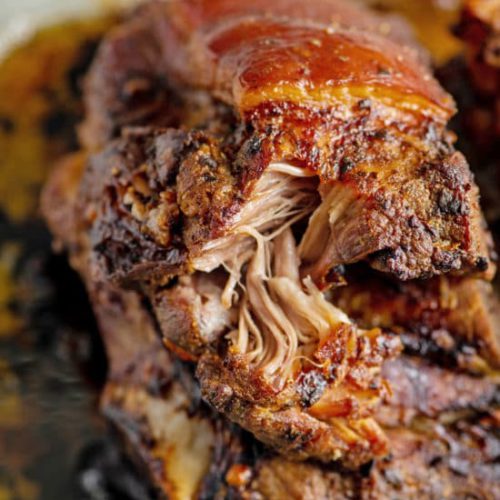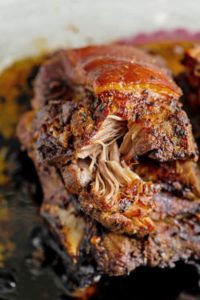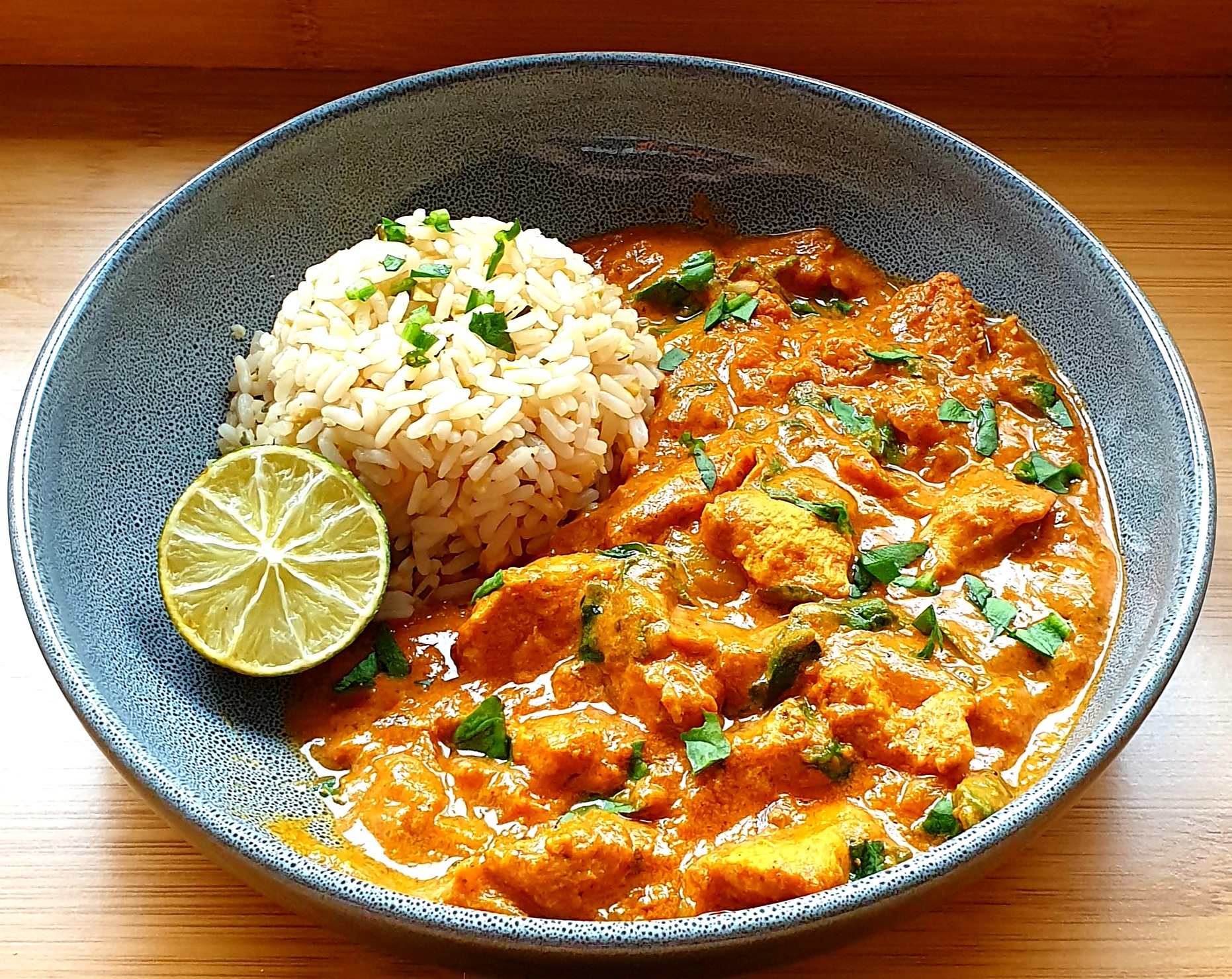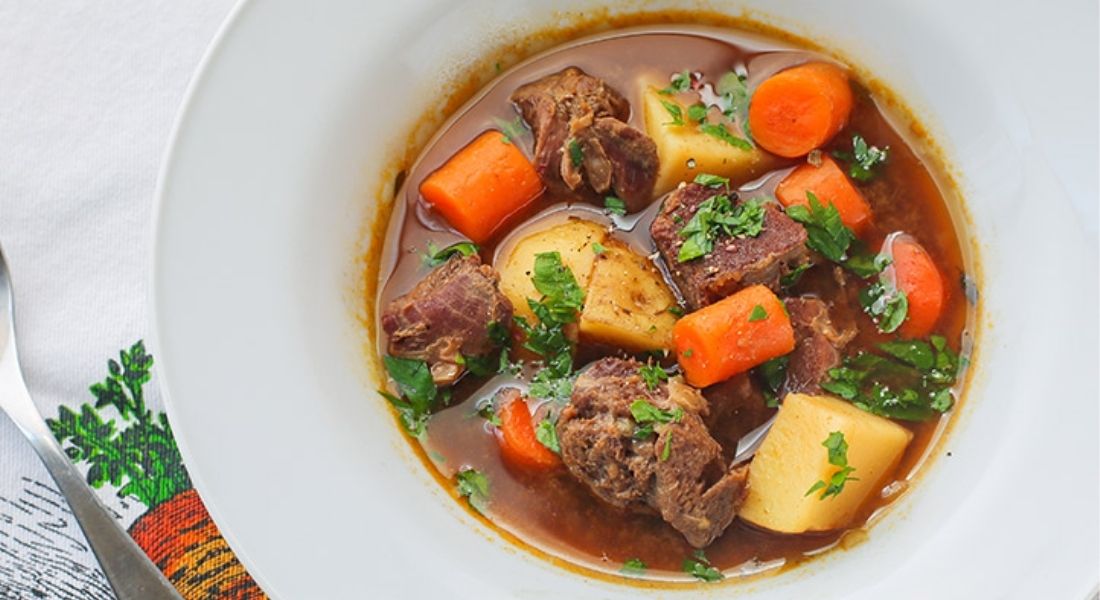Indulge in the tantalizing flavors of the Caribbean as we embark on a culinary journey to Puerto Rico, where the aromas of succulent roast pork fill the air. Get ready to tantalize your taste buds with the mouthwatering delight known as Pernil! This traditional Puerto Rican dish combines tender, slow-roasted pork infused with a tantalizing blend of herbs and spices, promising an explosion of flavors in every savory bite. So, grab your apron and prepare to savor the irresistible allure of Pernil, the crown jewel of Puerto Rican cuisine. Get ready to experience a symphony of taste that will transport you to the vibrant streets of San Juan with every delicious forkful.

Pernil (Puerto Rican Roast Pork)
Pernil is a traditional Puerto Rican dish that consists of roast pork shoulder or leg. It is a popular centerpiece for festive occasions and special events in Puerto Rican cuisine. Pernil is often prepared by marinating the pork in a flavorful mixture of spices and herbs, which may include ingredients such as garlic, oregano, cumin, salt, pepper, and citrus juices like orange or lime. The marinated pork is then slow-roasted until it becomes tender and juicy, with the outer layer turning crispy and golden brown.The slow-roasting process allows the flavors to penetrate the meat and creates a delicious combination of savory and aromatic elements. Pernil is typically cooked for several hours at a low temperature, which helps to break down the tough fibers and renders the fat, resulting in a tender and succulent pork roast.Pernil is often served as the main dish during festive occasions such as Christmas, New Year's, and other special celebrations. It is commonly accompanied by traditional Puerto Rican sides such as arroz con gandules (rice with pigeon peas), tostones (fried plantains), and a variety of salsas or sauces. The leftovers of Pernil can be used in sandwiches, tacos, or other dishes, making it a versatile and flavorful ingredient.Overall, Pernil is a beloved Puerto Rican dish that showcases the rich flavors and culinary traditions of the island. It has become a symbol of celebration and togetherness in Puerto Rican culture.
Ingredients
- 1 whole pork shoulder (8-10 pounds)
- 10 cloves of garlic, minced
- 2 tablespoons of dried oregano
- 2 tablespoons of olive oil
- 2 tablespoons of vinegar
- 2 tablespoons of orange juice
- 2 tablespoons of lime juice
- 1 tablespoon of salt
- 1 tablespoon of black pepper
- 2 teaspoons of ground cumin
- 1 teaspoon of paprika
- 1 teaspoon of dried thyme
- 1 teaspoon of dried rosemary
- 1 teaspoon of ground coriander
Instructions
- Rinse the pork shoulder under cold water and pat it dry with paper towels.
- In a small bowl, combine the minced garlic, dried oregano, olive oil, vinegar, orange juice, lime juice, salt, black pepper, ground cumin, paprika, dried thyme, dried rosemary, and ground coriander. Mix well to form a paste.
- Make several small incisions all over the pork shoulder using a sharp knife. Rub the garlic paste all over the pork, making sure to get it into the incisions as well.
- Place the seasoned pork shoulder in a large resealable plastic bag or a covered container. Marinate it in the refrigerator overnight, or for at least 4 hours.
- Preheat your oven to 325°F (165°C).
- Remove the pork shoulder from the refrigerator and let it sit at room temperature for about 30 minutes before cooking.
- Place the marinated pork shoulder on a rack in a roasting pan, fat side up. Cover the pan tightly with aluminum foil.
- Roast the pork in the preheated oven for about 4-5 hours, or until the internal temperature reaches 190°F (88°C). This low and slow cooking method will result in tender and flavorful meat.
- After about 4 hours, remove the foil and increase the oven temperature to 450°F (230°C). Roast the uncovered pork for an additional 20-30 minutes, or until the skin turns crispy and golden brown.
- Once cooked, remove the pork from the oven and let it rest for about 15 minutes before carving.
- Carve the pernil into thin slices and serve it hot. It pairs well with rice, beans, and a side of plantains.Enjoy your delicious Pernil, a flavorful and succulent Puerto Rican roast pork dish!
Video
Notes
Pernil, also known as Puerto Rican roast pork, is a delicious and popular dish that offers several benefits. Here are some of the benefits of enjoying pernil:
1. Rich in Protein: Pernil is primarily made from pork shoulder, which is a good source of high-quality protein. Protein is essential for building and repairing tissues, supporting the immune system, and maintaining healthy hair, skin, and nails.
2. Nutrient-Dense: Pernil contains various essential nutrients. Pork is a good source of B vitamins, including thiamin, niacin, riboflavin, and vitamin B12, which play a crucial role in energy production, brain function, and red blood cell formation. It also provides important minerals such as iron, zinc, selenium, and phosphorus.
3. Flavorful and Versatile: Pernil is marinated with a flavorful blend of herbs, spices, and citrus juices, resulting in a tender and succulent roast. The combination of seasonings gives pernil a unique taste that is both savory and slightly tangy. This versatility allows it to be served as the centerpiece of a meal, sliced in sandwiches, or used as an ingredient in various other dishes.
4. Comforting and Satisfying: Pernil is a comfort food that is often enjoyed during special occasions, holidays, and family gatherings. The rich flavors and tender meat can provide a sense of nostalgia and create a warm and inviting atmosphere. Its satisfying nature makes it a filling meal option that can keep you satiated for longer periods.
5. Cultural Significance: Pernil holds cultural significance in Puerto Rican cuisine and is a staple dish during celebrations like Christmas, New Year's Eve, and Easter. Enjoying pernil can be a way to connect with Puerto Rican traditions, experience their culinary heritage, and appreciate the cultural diversity of food.
6. Cooking Method: Pernil is typically slow-cooked, which helps to break down the tough fibers in the pork shoulder and renders the meat incredibly tender. This slow-cooking process also allows the flavors to develop and infuse into the meat, resulting in a dish with rich and deep flavors.
7. Leftovers and Meal Prep: Pernil often yields generous portions, and any leftovers can be utilized in various ways. The leftover meat can be used in sandwiches, tacos, quesadillas, salads, or even transformed into flavorful soups. This makes pernil a convenient choice for meal prepping or stretching meals for several days.
It's worth noting that while pernil can be a delicious and enjoyable dish, it is also important to consider individual dietary needs and preferences. It's recommended to consume it in moderation and balance it with a variety of other nutritious foods as part of a well-rounded diet.
Nutrition
Serving: 200g
Tried this recipe?Let us know how it was!




